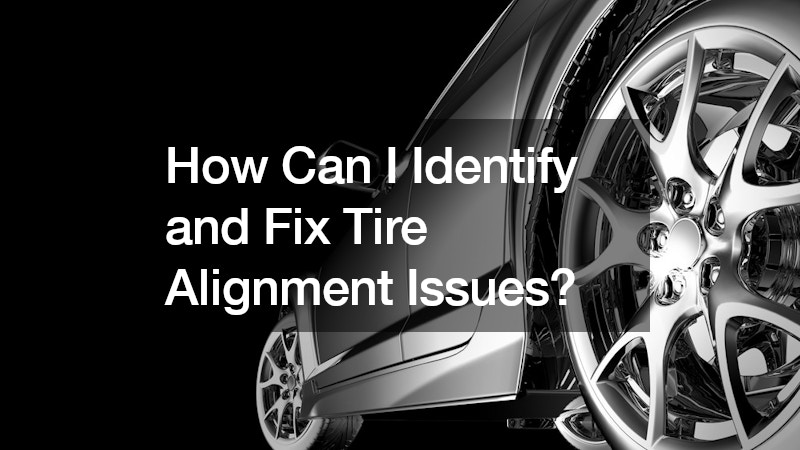The Most Common Auto Problems Seattle Car Owners Run Into
Introduction
This comprehensive guide explores the most frequent auto problems faced by car owners in Seattle, providing insights and solutions to help navigate these challenges effectively. Seattle’s diverse climate—from rainy winters to mild summers—poses unique challenges for vehicles, making it essential for drivers to understand common issues and their remedies. Whether it’s coping with GPS tracking systems or ensuring reliable performance during cold weather, this article covers essential information to maintain your vehicle’s health in the Emerald City.
Why Does My Car Struggle to Start in Cold Weather?

Battery Issues
In Seattle’s cold winters, battery performance can decline significantly. You may need a car towing service. Lower temperatures cause the chemical reactions within the battery to slow down, reducing its ability to produce electricity effectively. This phenomenon can lead to sluggish starts or even failure to start the engine altogether. To mitigate these issues, it’s crucial to have your battery tested regularly, especially before winter sets in. An auto mechanics inspection can assess the battery’s health and recommend replacements if necessary. Additionally, keeping terminals clean and ensuring secure connections can improve overall battery performance and longevity in colder months.
Fuel System Problems
Cold weather can also affect the fuel system of your vehicle. When temperatures drop, fuel can become thicker and less volatile, making it harder to ignite. This can result in rough idling, misfires, or difficulty starting the engine. To prevent these issues, consider using fuel additives designed for cold weather or keeping your fuel tank at least half full to minimize condensation. Regularly inspecting and cleaning fuel injectors can also improve fuel system efficiency and reduce the risk of clogs that can exacerbate cold weather starting problems.
Ignition Complications
In addition to battery and fuel issues, cold weather can impact the ignition system of your vehicle. Moisture and condensation can accumulate around spark plugs and ignition coils, causing them to malfunction. Symptoms may include rough engine starts, hesitation, or even engine misfires. Replacing worn spark plugs and ensuring ignition components are dry and properly sealed can help maintain reliable ignition performance in Seattle’s colder months. Regular maintenance by qualified technicians can identify potential issues early and prevent costly repairs down the road.
How Do I Prevent and Treat Windshield Fogging?
Causes of Windshield Fogging
Seattle’s humid climate can lead to frequent windshield fogging, especially during temperature fluctuations or rainy weather. Fog forms when warm, moist air inside the vehicle meets the cooler surface of the windshield, causing condensation. This phenomenon reduces visibility and can be particularly hazardous while driving.
Preventative Measures
To prevent windshield fogging, use your vehicle’s defroster system, which directs warm air across the windshield to eliminate condensation. Setting the air conditioning to a cool, dry setting can also help reduce interior humidity levels. Keeping your windows clean inside and out, especially the windshield, can further minimize fogging by preventing the buildup of residue that attracts moisture. You may need paintless dent removals.
Treatment Options
When fogging does occur, it’s essential to address it promptly for safe driving. Use a microfiber cloth or a specialized defogging solution to wipe the inside of the windshield thoroughly. For persistent fogging issues that may indicate compromised seals or glass, consult with professionals who specialize in auto window replacements. They can assess the condition of your windshield and recommend appropriate repairs or replacements to ensure optimal visibility and safety.
What Should I Do if My Car Is Overheating?

Common Causes of Overheating
Overheating is a common issue in Seattle, exacerbated by traffic congestion and hilly terrain that place additional strain on the engine and cooling system. Common causes include coolant leaks, a malfunctioning thermostat, or a failing water pump. Recognizing the signs of overheating and addressing them promptly can prevent serious engine damage and costly repairs.
Immediate Steps to Take
If your car begins to overheat, pull over to a safe location as soon as possible and turn off the engine. Allow the vehicle to cool down before attempting to check coolant levels or diagnose the issue further. Opening the hood carefully can expedite cooling. It’s crucial not to attempt to open the radiator cap while the engine is hot, as escaping steam and hot coolant can cause severe burns.
Long-Term Solutions
To prevent overheating, maintain your vehicle’s cooling system by regularly inspecting coolant levels and conditions. Replace coolant as recommended by your vehicle’s manufacturer to prevent corrosion and ensure efficient heat dissipation. Addressing leaks promptly and scheduling regular maintenance checks with a qualified mechanic can extend the life of your cooling system and prevent overheating issues in Seattle’s varied driving conditions.
Why Are My Brakes Squeaking?
Worn Brake Pads
Squeaky brakes are a common complaint among Seattle drivers, often due to worn brake pads. The city’s hilly terrain and frequent rain can accelerate brake pad wear, leading to squeaking or squealing noises when applying the brakes.
Debris on Brake Components
Another cause of brake squeaking is debris buildup on brake components such as calipers and rotors. Dirt, road salt, and brake dust can accumulate over time, affecting brake performance and causing noise. Regular cleaning and maintenance by local auto body repairs can help mitigate these issues and ensure smooth braking.
Moisture-Induced Noise
Moisture from Seattle’s damp climate can also contribute to brake noise, particularly after rainy weather or washing your vehicle. Drying your brakes thoroughly after exposure to moisture and using high-quality brake pads designed for wet conditions can reduce squeaking significantly. If brake noise persists despite maintenance efforts, consult with a professional to inspect for underlying issues and ensure your braking system operates quietly and effectively.
How Can I Identify and Fix Tire Alignment Issues?

Signs of Misalignment
Detecting tire misalignment early is crucial to prevent uneven tire wear and ensure safe handling. Common signs include steering wheel vibrations, vehicle pulling to one side, or uneven tire wear patterns. Seattle’s pothole-ridden roads and rough terrain can easily knock wheels out of alignment, making regular local auto repair checks essential.
Causes of Misalignment
Misalignment can occur due to various factors, including hitting potholes, curb impacts, or gradual wear over time. It’s essential to address misalignment promptly to prevent premature tire wear and maintain optimal vehicle performance and safety.
Solutions for Misalignment
Professional wheel alignment services can realign your vehicle’s wheels according to manufacturer specifications, restoring proper alignment angles. This process improves steering response, enhances fuel efficiency, and extends tire lifespan. Regular alignments, along with tire rotations and balancing, should be part of your vehicle maintenance routine to minimize wear and tear on tires and suspension components.
What Are the Signs of a Failing Transmission?
Common Symptoms
A failing transmission can manifest in several ways, including difficulty shifting gears, slipping gears, delayed engagement, or unusual noises like whining or clunking. These symptoms can indicate internal damage or fluid-related issues that require prompt attention from auto shops with expertise in transmission diagnostics and repair.
Diagnostic Tests
Diagnosing transmission problems often involves specialized tools and expertise. Mechanics may perform diagnostic tests such as checking transmission fluid levels and conditions, conducting a computerized scan of the transmission control module, or performing a road test to assess performance under different driving conditions.
Repair vs. Replacement
The decision to repair or replace a failing transmission depends on the extent of damage, vehicle age, and cost considerations. Minor issues like fluid leaks or solenoid failures may be repairable, whereas significant internal damage often necessitates transmission replacement. Consulting with a trusted mechanic can help you evaluate options and make an informed decision that aligns with your vehicle’s long-term reliability and performance goals.
Why Does My Car Have Electrical Problems?

Common Electrical Issues
Electrical problems in vehicles can stem from various sources, including battery issues, faulty alternators, wiring defects, or malfunctioning electrical components such as lights or power windows. Seattle’s wet climate can exacerbate these issues by accelerating corrosion and wear on electrical connections.
Diagnosing Electrical Problems
Diagnosing electrical issues requires methodical testing and inspection. Mechanics may use multimeters to check the battery voltage, inspect fuses for signs of damage, or perform continuity tests on wiring harnesses to identify shorts or open circuits.
Preventative Measures
To minimize electrical problems, maintain clean and dry electrical connections. Address warning signs such as flickering lights or slow power window operation promptly to prevent more significant issues. Regular inspections by auto repair services can catch potential electrical problems early, ensuring reliable vehicle performance in Seattle’s varied weather conditions.
What Causes Engine Misfires?
Ignition System Failures
Engine misfires can result from ignition system failures, such as worn spark plugs, faulty ignition coils, or damaged spark plug wires. In Seattle’s damp climate, moisture can infiltrate ignition components, causing erratic engine performance and misfires.
Fuel System Issues
Issues within the fuel system, such as clogged fuel injectors, a failing fuel pump, or dirty fuel filters, can disrupt fuel delivery to the engine cylinders. This imbalance can lead to incomplete combustion and engine misfires, affecting performance and fuel efficiency.
Mechanical Problems
Mechanical issues, such as low compression in engine cylinders or valve problems, can also trigger engine misfires. Regular maintenance, including timely spark plug replacements and fuel system cleanings, can prevent these issues and optimize engine performance in Seattle’s challenging driving conditions.
How Do I Deal with Rust and Corrosion in My Car?
Causes of Rust and Corrosion
Seattle’s damp climate and proximity to saltwater accelerate rust formation on vehicle surfaces. Road salt used for de-icing during winter can also contribute to corrosion on metal parts, compromising structural integrity and aesthetic appeal.
Preventative Strategies
To protect your vehicle from rust and corrosion, wash it regularly, especially during winter months when salt is prevalent. Applying a quality car paint protection product or wax creates a barrier against moisture and contaminants, preserving your car’s finish and reducing the risk of rust formation.
Repair Techniques
If rust spots appear, address them promptly with rust inhibitors or seek professional paintless dent removal services to restore your vehicle’s appearance. Regular inspections of vulnerable areas such as the undercarriage, wheel wells, and door frames can catch early signs of corrosion, allowing for timely repairs and extending your vehicle’s lifespan.
What Should I Know About Regular Maintenance to Avoid Common Problems?
Importance of Regular Maintenance
Regular maintenance is critical for keeping your vehicle in optimal condition and preventing costly repairs. Routine inspections and servicing help detect potential issues early, ensuring safe and reliable operation.
Key Maintenance Tips
Establish a maintenance schedule based on your vehicle’s recommended service intervals and your driving habits. Tasks such as regular oil changes, fluid checks, brake inspections, and filter replacements should be prioritized to maximize performance and longevity.
Creating a Maintenance Schedule
Consult your vehicle owner’s manual or a trusted local auto repair shop to create a personalized maintenance schedule. Consider Seattle’s climate and driving conditions when scheduling tasks like tire rotations, coolant flushes, and battery checks to address seasonal challenges effectively.
How Can I Improve Fuel Efficiency in Seattle’s Traffic?
Driving Habits
Adopting fuel-efficient driving habits can enhance fuel economy, especially in Seattle’s congested traffic. Avoid rapid acceleration, and excessive idling, and maintain a steady speed whenever possible to optimize fuel efficiency.
Vehicle Maintenance
Regular maintenance plays a crucial role in improving fuel efficiency. Keeping tires properly inflated, using the recommended grade of motor oil, and maintaining a clean air filter ensures your engine operates efficiently and consumes less fuel during city driving.
Fuel-Efficient Technologies
Consider vehicles equipped with fuel-saving technologies such as hybrid powertrains, start-stop systems, or aerodynamic designs. These features are designed to minimize fuel consumption and emissions, making them ideal for urban driving conditions like those in Seattle.
Conclusion
By familiarizing yourself with these common auto problems and their solutions, Seattle car owners can take proactive steps to maintain their vehicles effectively. Whether addressing gps tracking systems or dealing with specific climate-related issues like cold weather starting or rust prevention, staying informed and proactive about vehicle maintenance ensures your car remains reliable and efficient. Regular servicing and prompt attention to warning signs not only extend your vehicle’s lifespan but also enhance safety and driving pleasure in Seattle’s diverse and challenging road conditions.
